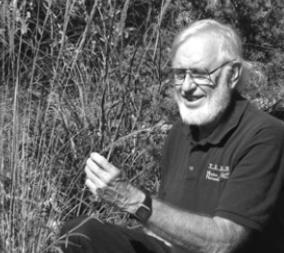Different Habitats Found in the Hill Country
When you think about all the many different areas of the Earth that are different from one another and generally very large in scale, things that come to mind include mountains, oceans, sea coasts, forests, deserts, jungles, tundra, glaciers, and frozen areas on the poles.
But when we think about those areas, we generally think about very large areas, each covering significant fractions of the Earth. But if we think about smaller areas, like the United States, or Texas, or even the Hill Country, we don’t lump all of any of those places as belonging to only one type of landscape.
On a local scale, we notice differences in different areas of the Hill Country, or even different areas of a single property. Biologists and range scientists, when wishing to describe a particular place to one another will characterize a particular area on the basis of the type of habitat. The most common ones in the Hill Country are woodlands, grasslands, savannas, and riparian areas.
A woodland is generally described as an area “dominated” by trees, usually mature oak trees. A grassland is an area with relatively few woody species, but it is not thought to have only grasses, but to also contain a fair number of forbs (wildflowers) of various kinds. A savanna is generally described as a grassland with a number of trees scattered around--think of nature films of Africa.
A riparian area is usually rather specifically described as an area adjacent to a creek itself and out to include an area including, but not beyond, the area that occasionally floods at least once every few years.
Obviously, such classifications are somewhat arbitrary—where does a woodland leave off and a savanna begin, or when does a grassland become a savanna, etc.? There are no hard and fast rules here, but when one uses one of these terms, we know generally what the area looks like. Sometimes we hear classifications with a little more thorough description, such as an oak/juniper woodland, or a tall grass prairie or a short grass prairie. Dense cedar thickets are not generally referred to as being a woodland, but more often described as a cedar brake.
The ideal riparian area will have a collection of different kinds of plants such as sedges, rushes and grasses from in the water to the water’s edge to larger shrubs and trees further up, and all of this vegetation is vital to the health of the riparian area. Riparian areas represent only a small fraction of the Hill Country, but the condition of these areas is vital for a healthy habitat. Riparian areas are the most fragile, and subject to more human-caused destruction, than any other parts of the Hill Country.
A fairly common sight in the Hill Country is a woodland or savanna with mature trees with mostly short grass, and I believe a fair number of folks will consider that an ideal landscape—somewhat like a park or golf course. But in fact, it is not a healthy habitat because there is little if any understory: shrubs, vines, root sprouts, and tree branches reaching down to near the ground. This is a missing part of a healthy habitat, and it is the result of too many years of too many goats, deer and/or exotics.
Also, for such a habitat to be healthy, it should also contain numerous native grasses, including at least some mid-sized ones, as well as many species of forbs, blooming from spring through fall. To achieve this, some landowners may have to reduce the number of animal unit days grazing the area.
Finally, if the “woodland” is really better described as a cedar brake, this area is useful habitat to none of our native animals and may be poor at capturing and keeping rainfall. Small amounts of cedar scattered among the hardwoods or even scattered in open areas are not a problem and make for a diverse habitat, but a dense cedar brake of significant size is just wasted land.
Whatever kind(s) of habitats you have, the following things are the most important for a landowner to keep in mind, natives not exotics, and diversity, diversity, diversity of species is best.
For those readers around Kerrville, I am available at Riverside Nature Center, from 10 to 12 on Fridays to answer questions one-on-one or discuss nature issues. Until next time…
Jim Stanley is a Texas Master Naturalist and the author of the books “Hill Country Ecology,” “Hill Country Landowner’s Guide” and “A Beginner’s Handbook for Rural Texas Landowners.” He can be reached at <jstmn@ktc.com>. Previous columns can be seen at <www.hillcountrynaturalist.org>.

